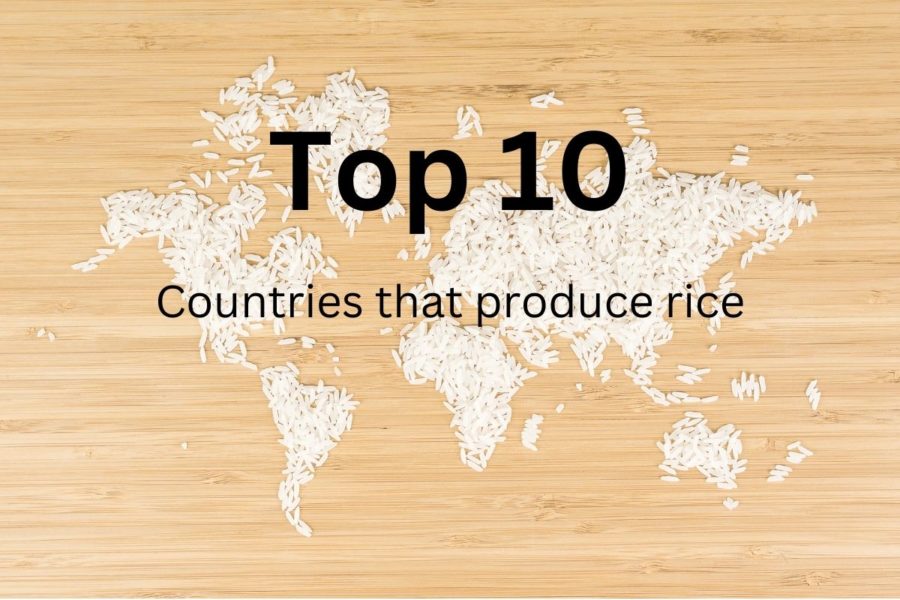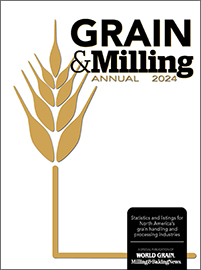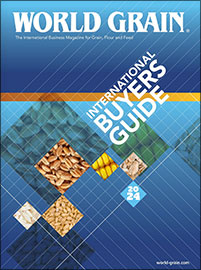
Top 10 rice producing countries
WASHINGTON, DC, US — Along with corn and wheat, rice, an edible starchy cereal grain, is one of the important staple crops used to nourish the world, providing a food source rich in carbohydrates.
According to the US Department of Agriculture’s World Agriculture Supply and Demand Estimates (WASDE) November 2022 report, the global production of rice is projected to reach 503.69 million tonnes in 2022-23. Of that total, USDA expects 52.83 million tonnes will be exported to world markets.
China is the largest producer and importer of rice to meet its projected 2022-23 domestic consumption of 155 million tonnes.
These are the top 10 global rice producing countries.

Top 10 Rice.jpg

1. China
The world’s most populous country, China is projected to produce 147 million tonnes of rice in 2022-23, but also import an additional 5 million tonnes for its 1.41 billion people. Exports are seen at 2.2 million tonnes.

2. India
India, the world’s second-most populous country with 1.39 billion people, will harvest 124 million tonnes of rice in 2022-23. India is expected to consume 109 million tonnes while exporting a world-leading 19.5 million tonnes.

3. Indonesia
Indonesia is the world’s third-largest producer of rice, but it’s a big drop-off to 34.6 million tonnes. With 276.4 million people and domestic rice use seen at 35.5 million tonnes, the Southeast Asian nation straddling the Indian and Pacific oceans is expected to import 550,000 tonnes.

4.VIetnam
Vietnam checks in with 27.23 million tonnes of rice production expected in 2022-23. The Southeast Asian nation’s exports are predicted to be 7.2 million tonnes, while domestic use will touch 21.5 million tonnes for its 98.2 million population.

5.Thailand
Thailand is projected to harvest 20.10 million tonnes of rice for 2022-23 and export 8.2 million tonnes. The Southeast Asian nation uses 12.9 million tonnes domestically with a population of nearly 70 million people.
.jpg?t=1669230773&width=900)
6.Myanmar (Burma)
Myanmar (Burma), with nearly 55 million people, shares a border with Thailand on the Bay of Bengal. Its farmers are seen harvesting 12.5 million tonnes of rice in 2022-23, with 10.3 million tonnes used domestically and 2.4 million tonnes available for export.

7.Philippines
The Philippines is projected to produce 12.41 million tonnes of rice for 2022-23, but the archipelagic country of 111 million people in Southeast Asia will use 15.6 million tonnes and has no exports of the grain.

8.Japan
The island Asian nation of Japan is a major producer that uses most of its harvest for its almost 126 million people, leaving little for exports. Japan is projected to produce 7.45 million tonnes of rice in 2022-23, use 8.2 million tonnes and ship just 120,000 tonnes overseas while importing 690,000 tonnes.

9.Brazil
Brazil is a major rice producer with 7.3 million tonnes expected from the 2022-23 harvest. The South American agricultural powerhouse with a population of 214 million, known mostly for its soybean and corn production, is projected to use 7.25 million tonnes of rice and export 900,000 tonnes.

10. Pakistan
Rounding out the top 10 is Pakistan, which is projected to produce 6.6 million tonnes of rice for 2022-23 while using 3.7 million tonnes. The country of 225.2 million people in South Asia is expected to export 4 million tonnes.
Current Issues & Directories




Popular Articles
Popular Galleries
-

King Milling celebrates mill expansion
LOWELL, MICHIGAN, US — King Milling Co., Michigan’s largest flour miller, on April 10 celebrated the completion of the latest expansion of its flour milling complex. The $47 million project, which began in 2022 and was completed this winter, involved erecting the mill as well as two slipform concrete wheat storage bins that are attached to it. A full report on the new mill will appear in the May issue of World Grain.
-

IAOM Supplier Showcase
KANSAS CITY, MISSOURI, US — The International Association of Operative Millers’ (IAOM) 128th Annual Conference & Expo will be April 16-18 in Salt Lake City, Utah, US. Along with educational programming, committee meetings and networking opportunities, the event includes the expo. Following are products and services from World Grain advertisers who will be exhibiting at IAOM.